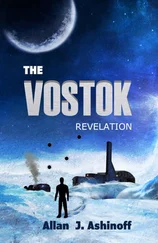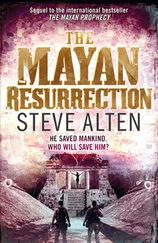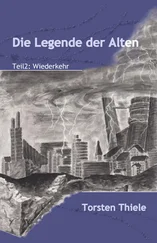Two scientists on board had died during an emergency ascent, and the deep-sea submersible pilot was blamed. Discharged from the Navy, Jonas decided to become a marine biologist, intent on proving the megalodon was still alive.
Seven years later, rising construction costs on the Tanaka Institute forced Masao to accept a contract with the Japanese Marine Science Technology Center. The mission: to disperse sensory drones along the Mariana Trench that would function as an early-warning earthquake detection system. To complete the array, D.J. Tanaka, Masao’s son, had to anchor each drone to the trench floor using an Abyss Glider, a sub resembling a one-man version of the Barracuda . When several of the drones stopped transmitting data, Masao needed a second diver to help retrieve one of the damaged sensors.
He selected Jonas Taylor.
Jonas accepted the offer, desiring only to recover an unfossilized white megalodon tooth photographed in the wreckage. But the dive ended badly.
Jonas and D.J. came face to face with not one but two Megs. The first was a forty-five-foot male, which became entangled in the surface ship’s cable. The second was its sixty-foot pregnant mate, which was accidently lured topside.
The Tanaka Institute took on the task of capturing the female. Jonas and Masao were determined to quarantine the monster in the whale lagoon, with JAMSTEC agreeing to refit the canal entrance with King Kong-sized steel doors.
The hunt lasted a month, culminating in an act that surpassed my own nightmare in Loch Ness. In the end, one of the megalodon’s surviving pups was captured and raised in Masao’s cetacean facility — and a monster-shark cottage industry was born.
Angel, dubbed the Angel of Death, was a 70-foot albino, so fearsome she was easily one of the most terrifying creatures ever to exist. The monster would earn the Tanaka-Taylor family hundreds of millions of dollars. She also managed to escape twice, birth two litters of pups, and devour no less than a dozen humans, five of them in her lagoon.
Yet people still lined up by the tens of thousands to see her, and they wept when they learned she had died. Angel had met her own Angel of Death last summer, following her most recent escape. She had been tracked to the Western Pacific and had been caught in open water in an industrial fishing net, where she became entangled and drowned.
At least, that was what the world had been told…
* * *
The rusted-white steel superstructure of the 319-foot-long hopper dredge McFarland towered five stories above the deck and nearly twice that over the waterline. Everything aft of the command center and crews’ quarters was dedicated to the business of dredging. Built in 1967, the ship was designed to clear waterways of sediment by vacuuming up slurry — a mixture of sand and water — from the sea floor using two large drag arms. After being pumped through pipes, the slurry would be deposited in a hopper, a massive hold that occupied the mid- and aft-decks like an oversized Olympic swimming pool. The McFarland’s hopper could hold more than six thousand tons of slurry and evacuate it in minutes through its keel doors.
The Tanaka Institute had purchased the McFarland a year after the U.S. Army Corps of Engineers had decommissioned the ship and three months after Angel had birthed her five pups in captivity. Jonas had been looking for a vessel large enough to safely transport the juvenile sharks to another aquarium, knowing the Institute simply wasn’t large enough to house six full-grown megalodons.
It was still dark outside when I left sickbay and made my way to the bridge, the hood of the crewmen’s jacket Angus had left me pulled tightly around my head and face, just in case the Colonel had one of MJ-12’s satellites watching the boat.
We were headed north at three knots, the ship’s bow maneuvering through lead-gray surface waters dotted with islands of ice. To port rose the snow-packed cliffs that dominated the East Antarctic coastline; to starboard, the dark horizon and open ocean. I paused at the guardrail to look down at the ship’s main deck and its mammoth hopper. The open hold occupied the deck space between the bridge superstructure and the ship’s bow. The 175-foot-long, 45-foot-wide, 55-foot-deep tub remained in the shadows, the machinery designed to stir the captured slurry long since removed.
Locating an interior stairwell, I ascended to the bridge.
The McFarland’s command center seemed far too big for its solitary row of computer consoles. Large bay windows surrounded the chamber on all four sides, looking out nine stories above the ocean. There were two men inside. The boat’s captain, a Georgia man named Jon Hudson, was at the helm. The other man sat at a chart table, studying a map of the continent.
Gray-haired and in his mid-sixties, Jonas Taylor appeared fit, but the dark circles under his eyes told a different story. Rising to meet me, he greeted me in a bear hug.
“Zachary Wallace, you look good for a guy who didn’t have a pulse an hour ago. Sorry about the way we had to bring you aboard, but you’re messing with an intelligence agency exercising a mercenary mentality. I guess that’s a necessity when dealing with extraterrestrial threats.”
“There is no extraterrestrial threat. The D.C. attack was a false flag event staged to look like an E.T. vessel.”
“Staged by whom?”
I glanced at the Captain, whose back was to us. “Is there somewhere we can speak in private?”
“Captain, how far are we from the Amery Ice Shelf?”
“Just under five nautical miles. No close contacts on sonar or radar.”
“All engines stop. The bridge is mine. Get some breakfast.”
Jonas waited until the Captain left. “For the record, I trust the Captain.”
“I have no doubt he’s a loyal employee, but we’re dealing with sociopaths. Killing is as natural to them as it is to Bela and Lizzy. If you have the information they want, they’ll get it.”
“ They being MAJESTIC-12?”
“MJ-12 oversees the black ops weapon systems and the military bases. The guys calling the shots are a cartel of power brokers, bankers, and egomaniacs who think the rest of us are here to serve them. These are the same assholes that stole my Vostok generators and burned our factory to the ground. They act above the law, have no interest in improving the lives of the seven billion people on this planet, and don’t give a damn that their organizations are destroying the earth’s biosphere.
“And they kidnapped William and Brandy to force me to lead them back to Lake Vostok.”
“Why? What’s in Vostok?”
“I’d rather not say, but it’s important enough that MJ-12 designed a sub to travel beneath the ice sheet through a network of subglacial rivers into the lake. Jonas, it’s critically important I make it to Vostok before them.”
Jonas scanned his chart, using a slide rule to measure distances. “Vostok’s at least eight to nine hundred miles away. My Manta subs are equipped with Valkyries, but they don’t pack nearly enough juice to take you that far.”
“They don’t have to. MJ-12’s sub will lead me into the lake’s northern basin. Once I’m there, I’ll be able to overtake them and get to where I need to be before they do.”
“And how will making it back to Lake Vostok ahead of these guys save William and Brandy?”
“Again, I’d rather not say. The less you know the better.”
“It’ll take you twenty to thirty hours just to reach Vostok. Maybe more. Who’s your copilot?”
Angus must have been eavesdropping from the interior stairwell, for he came bursting in on cue. “I’m going with the lad.”
Jonas and I looked at one another with the same startled expression.
Читать дальше












